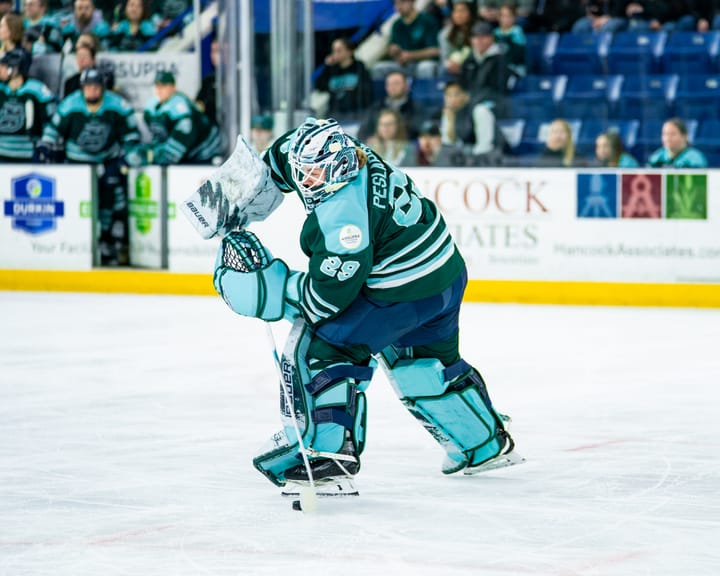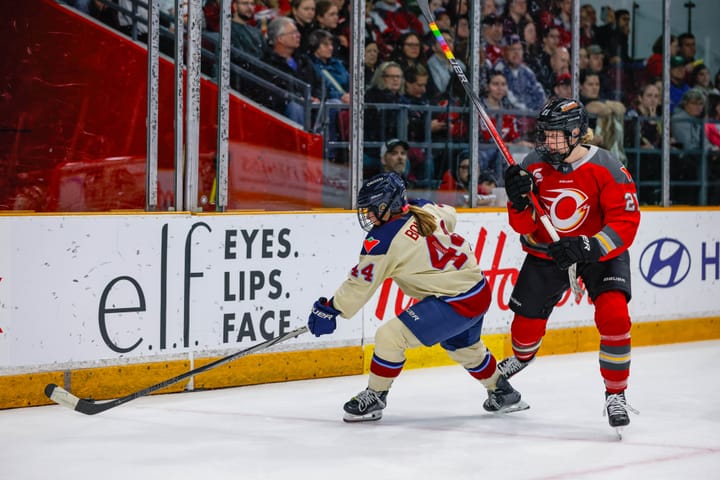Someone forgot to plug in the Whitecaps’ power play
After six games Minnesota has more shorties than power-play goals
It’s been more than a month since Allie Thunstrom scored the Whitecaps’ first and only goal on the advantage.
Through six games, the Minnesota Whitecaps have scored one goal on 20 power-play opportunities. For those who don’t like division, that works out to a five percent success rate on the power play.
Now, that’s not great but we are just talking about half a dozen games here. It’s a really small sample size but it looks a lot more significant in a 20-game season. You don’t want to spend a third of your season searching for answers on the power play. It’s just not a fun way to start a hockey season.
Minnesota is averaging a league-worst 1.67 GF/GP (goals for per game) and is, on average, being out-shot by over 10 shots per game. So, their problems go a lot deeper than special teams — though it should be stated that the penalty kill, led by Amanda Leveille, has been outstanding. Again, to state the obvious, we are looking at small sample sizes here — these numbers are also definitely influenced by a tough schedule to start the year — but when we’re looking for answers to the Whitecaps slow start, our eyes are naturally drawn to the ice-cold power play.
Thus far, the Whitecaps have more shorthanded goals than power-play goals. And this team had a league-best 26.3 percent power play in Lake Placid. Those two facts just don’t sit comfortably next to each other. The same can be said of Nicole Schammel, Meghan Lorence, Meaghan Pezon, and Audra Morrison having a combined zero points through the first six games of the season. All of those players should be picking up points on the advantage (and at even strength).
So, what the heck happened? Well, let’s start at personnel.
Gone from the team are two of the best puck-moving defenders on the planet: Sydney Baldwin didn’t return for the 2021-22 campaign and Amanda Boulier packed her bags to join the Boston Pride. Winger Nina Rodgers, who had three primary points on the PP in Lake Placid, has also moved on.
Related
Video Breakdown: The Minnesota Whitecaps’ Power Play
On paper, the Whitecaps have more than enough talent among their forwards to put together a threatening power play. Running four forwards and one defender makes a lot of sense here, especially while the team is getting a feel for how to attack without Boulier or Baldwin pulling the strings from the point. The truth is, it’s not easy to replace a Baldwin or a Boulier. Minnesota will likely have to rely more on playmakers like Jonna Curtis, Lorence, and Pezon without them.
There are options in-house to fill that role at the point on the first unit, including Ashleigh Brykaliuk, Taylor Turnquist, and Patti Marshall, but this is a big change. It’s not going to suddenly click overnight.
What the Whitecaps really need is more opportunities and a bounce or two to go their way. Hockey is funny like that, the key to most successful power plays is coaching, chemistry, and confidence. Minnesota appears to be lacking the latter two ingredients and it is up to the coaching staff to find a way to turn things around. It also wouldn’t hurt if they got a greasy goal and just got that next power-play goal out of the way.
This Whitecaps team has too much talent at the forward position to be this dependent on Leveille to steal their wins. Remember the Whitecaps of two seasons ago? In 2019-20, they were the only team capable of trading punches with the unbeatable Pride thanks to their transition game at evens and a best-in-league 23.26 PP%. They don’t need to be a true offensive juggernaut to be successful this season, but they need to be better than they have been.
Data courtesy of premierhockeyfederation.com, TheirHockeyCounts.com, and EliteProspects.com. Disclosure: the author of this story owns and operates Their Hockey Counts.





Comments ()